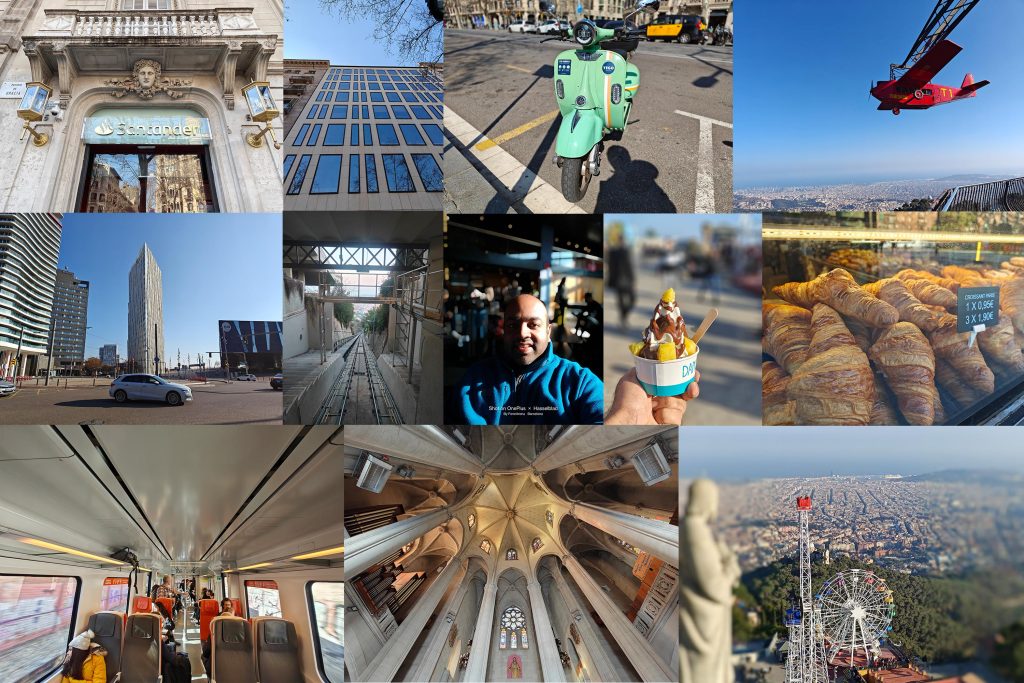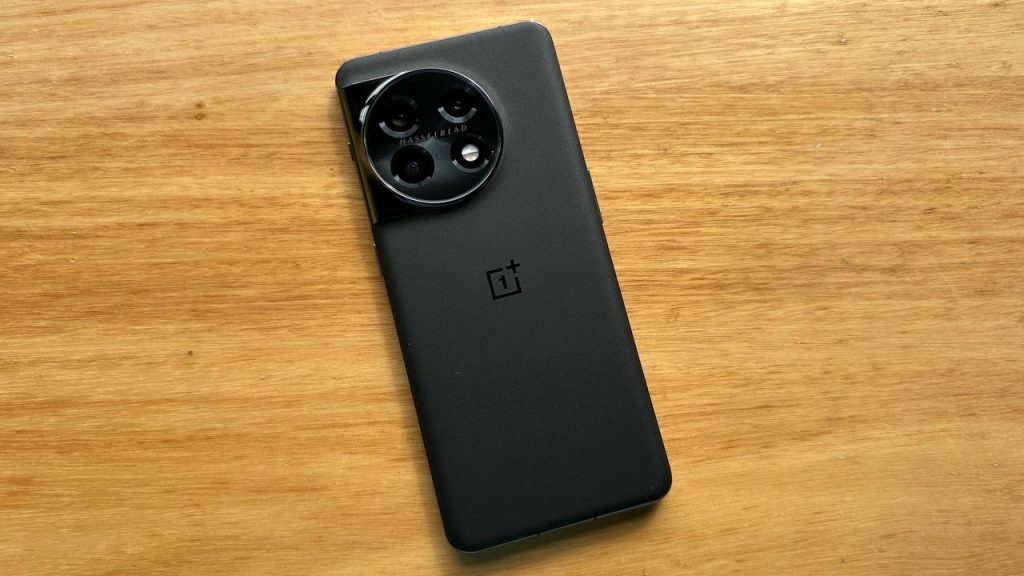

After wrapping up Mobile World Congress 2023, I had an extra day to explore Barcelona before flying back home. I decided to put the OnePlus 11 Camera through its paces in a real-world setting. My plan was to go around the city and eventually reach Tibidabo, the highest point in the city with over 120 years of history and some of the city’s best views. This would give us a chance to see how the phone’s camera performs under various scenarios.
OnePlus 11 5G camera specifications


- 50MP Sony IMX890 1/1.56-inch sensor with an f/1.8 lens and OIS, EIS
- 48MP Sony IMX581, 1/2 inch sensor with 115° field-of-view
- 32MP Sony IMX709, 1/2.74 inch sensor for RGBW portrait telephoto lens with 2x optical zoom
- 16MP Sony IMX471 front facing camera with ƒ/2.45 lens
The new Natural Colour Calibration with Hasselblad promises industry-leading colour science. Beyond all that jargon, how do the images captured with the phone turn out? Let’s find out.
I decided to fuel up with some breakfast and stumbled upon these insanely good croissants – seriously, some of the best I’ve had in Europe. The OnePlus 11 camera really flexed its muscles here, managing to capture the flaky textures and golden hues nicely, even through the glass case.
We are at Diagonal Mar where the longest avenue of the city – Avinguda Diagonal meets the sea.
The interesting building at the centre is the R&D headquarters of Telefonica and is called La Torre 00-Telefónica Diagonal. Nice spot to get a glimpse of modern Spanish architecture and to check how the phone handles a complex scene with moving objects. The sunlight was tricky, and the photo seems natural with a lot of details, but the scene could be brighter
We are back indoors to test how the selfie-camera behaves under complex lighting. There is sunlight on one side of the face and inadequate lighting in the room. I really like how the portrait mode worked here but wish the other side of my face was visible as it seems underexposed.
We are now at Passeig de Gràcia, to witness some fine architecture on display. This entrance to a bank caught my attention. A good amount of detail in the photo, including the buildings and tree branches in the reflection.
Shot of another interesting building here, and the photo looks accurate and balanced.
I come across an electric scooter from Yego and captured this shot. Some nice detail and bokeh. Going to certainly rent one of these on my next trip.
We next get on a train to head to the highest point in the city. Tibidabo is known for the Sagrat Cor church and the adjacent amusement park.
This is a chance to put the Ultra-wide camera to test and the motion blur outside the window is captured neatly while the details inside the cabin are preserved very well. For a spontaneous handheld shot on a moving train, this is impressive.
We finally make it to the Tibidabo amusement park, and it is a good chance to use the main camera to capture the stunning work of Spanish architect Enric Sagnier. A great amount of detail in the image and everything looks natural with the right amount of sharpness. There are a couple of small spots at the bottom which are not completely in focus, but that’s fine.
The Tibidabo amusement park was opened in 1905 and is one of the oldest parks in the world. It has some interesting rides including Avió pictured below. It is a replica of the first aircraft to fly from Barcelona to Madrid in 1927. We have a lot going on in this scenario and the camera needs to capture the moving plane, the horizon and the city landscape.
If you see the full-size image, you can see the entire city landscape, the sea, a cruise ship near the port and also a couple of aircraft in the sky. You can also see a child peeking out of the plane’s window. A couple of spots on the image are not sharp enough, but on the whole, the camera has managed to capture a ton of detail and it looks natural. This is one of my favourite pictures from this test so far.
Acquired some gelato adorned with pineapples and chocolate sauce to check the prowess of the portrait camera in capturing food imagery.
Despite a couple of minor imperfections, the photo looks natural, and you can notice the textures of all the contents.
We are now running against the clock, and it is time to test the selfie camera at over 1800 feet above sea level before heading down.
Pretty good for a handheld photo taken on the first attempt in windy conditions with the sun going down. I do wish more details of the statue behind me were preserved.
Now it is time to put the Ultra-wide camera to test again inside the Sagrat Cor church.
The image contains a good amount of detail and no noise but feels a tad darker than expected.
One feature worth mentioning is the tilt-shift mode which produces some interesting results like the image below.
As we were heading back down in the funicular, we get to test the camera in a challenging scenario and to see how effective is the HDR mode. The train track and the steps are well-lit, and the bright cityscape and sky are still visible and not blown out.
One last photo before we wrap up the test, and it has gotten dark in the city. The street lights, the details on the bus and the texture of the road in this picture are clear and look natural.
In conclusion, I have to say I am impressed by the overall camera performance of the OnePlus 11. The device produces accurate images which are not over-saturated or noisy. The zoom range could be higher, and the processing could be better in a few scenarios, but other than that the OnePlus 11 is no slouch in the imaging department.
The OnePlus 11 5G starts at Rs. 56,999 and is available from Amazon.in, OnePlus online store and offline stores with several launch offers.
Check out the full-resolution samples here.
